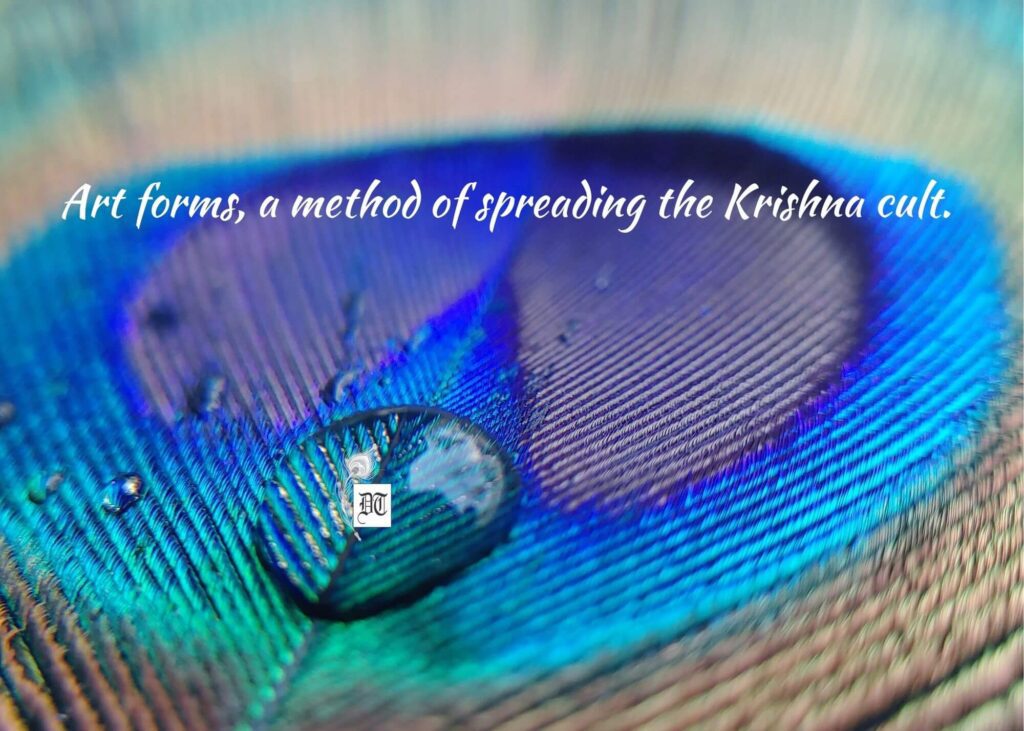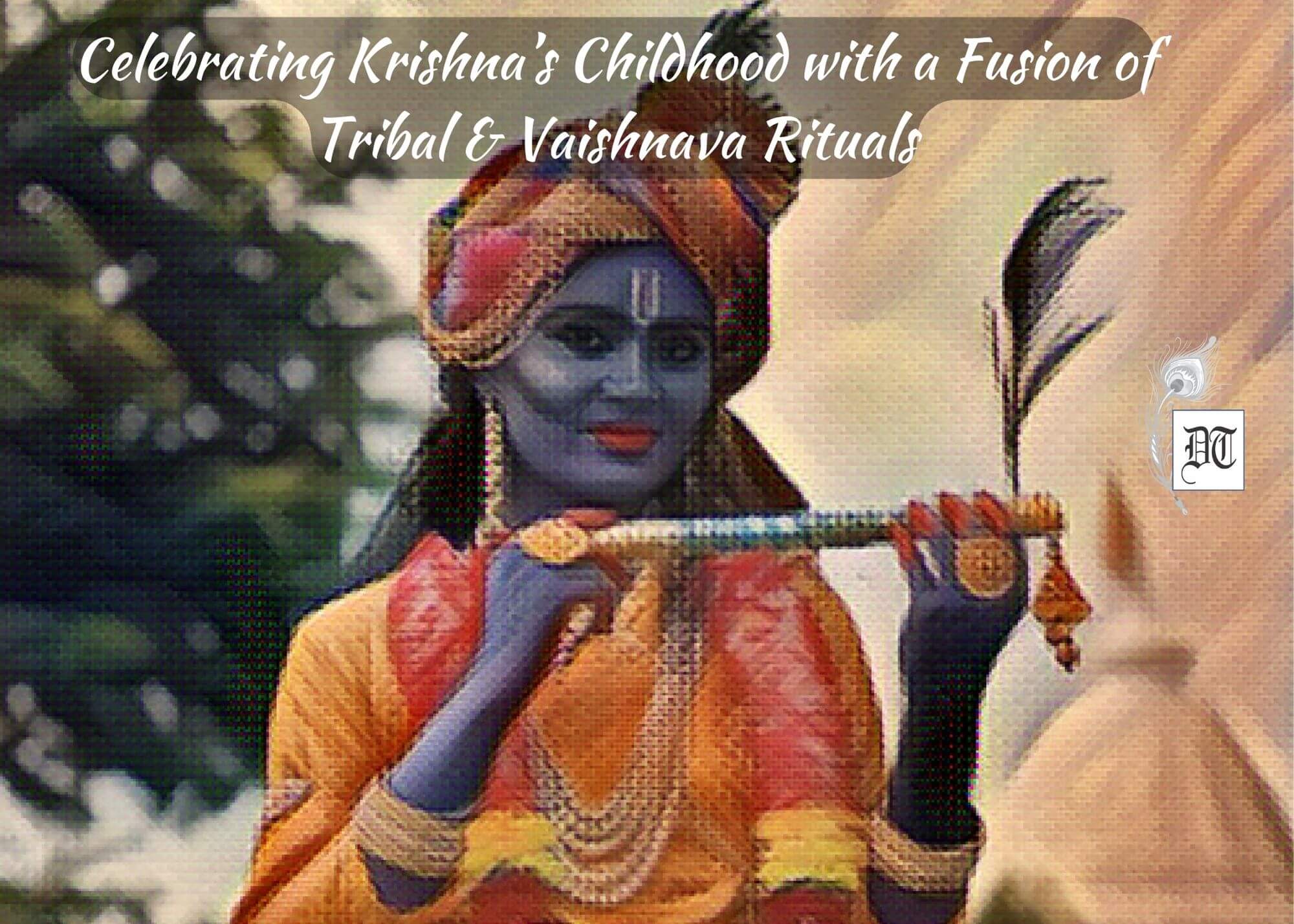Reading Time: 4 minutes
Ancient spirits and animal sacrifices are a part of the rites during a Vaishnava festival in Majuli, Assam. It’s associated with Krishna’s childhood, informs Soumya, exclusively for Different Truths.


Recently we had the privilege of witnessing a major religious festival of two very diverse and little-known communities, both rarely experienced by outsiders.
Interestingly both are Vaishnava festivals, but they couldn’t be more different from each other.
The first was Govardhan puja, which happens just before Diwali, and is a pastoral festival of cow herders. I had earlier seen this celebrated in North India, and the roots are in an episode of Krishna’s childhood.
But amongst the Santhals of Ajodhya hills, this is celebrated in a way that would be completely unrecognisable anywhere else and shock traditional Vaishnavite.
They celebrate this in much the same way as they celebrate any other festival, even Christmas, by the converts.
They paint their houses, draw beautiful pictures, and decorate the village and their cattle, worshipped in a song called Gaijagani.
They dance to traditional folk music, to the heady beat of drums, imbibing freely of country liquor brewed locally, and feast on chicken and pork.
They dance to traditional folk music, to the heady beat of drums, imbibing freely of country liquor brewed locally, and feast on chicken and pork. Also, from sacrificed birds, whose colours are specified for various occasions, and the pig reserved for the final day, Diwali, when they worship Goddess Kali like their Bengali neighbours.
All the songs are not religious, and I heard a lot of satire and protest songs along with the more traditional ones.
They continued their age-old practice by worshipping their ancient spirit Gods, just changing the names around when they converted to mainstream Hinduism of the plains people or the Christianity of the missionaries.
The other was from further east, on the island of Majuli, the largest riverine island in the world, on the Brahmaputra, in Upper Assam.
This island can only be reached by boat and has a unique Vaishnava culture, which has been largely preserved for over three centuries when Shankardev visited the island and established this as the centre of the new movement that he was propagating.
It was the reformation of medieval Hindu practices… and he introduced Vaishnava culture to Assam…
It was the reformation of medieval Hindu practices, largely Tantrik in the east, and he introduced Vaishnava culture to Assam, which continues to be the primary religious practice today.
He was a multifaceted personality, and he wrote songs and plays on Krishna’s life, setting them to music, choreographed dances, introduced mask making and established a series of monasteries which would preserve and propagate these art forms as a method of spreading the Krishna cult.


We were lucky to visit during the festival of Raas, when each village puts up a grand show and a re-enactment of Krishna’s life, but in the exact words and to the same music and choreography as created by Shankardev 350 years ago.
The performance goes on all night and is repeated three days in a row to packed houses. The same show every year with the exact words, tunes, and gestures doesn’t make a pall on the audience. The star is the villain, Kamsa, whose larger-than-life performance enthrals the audience.
All villagers were teetotallers and vegetarians during this period, and elaborate meals were cooked. However, fish is considered a vegetable here, as is inevitable in an island community.
The performers are all local people, but the standards are incredibly high. The audience comes dressed in finery and is vocally appreciative.
This unique ecosystem is now preserved as a United Nations cultural heritage…
This unique ecosystem is now preserved as a United Nations cultural heritage, but the credit for preservation goes to the monasteries and the local population.
The dance form introduced by Sankar Dev is the only classical dance form in Assam and has nuances of Kathak and Manipuri.
What astounded me was that a minuscule agrarian community cut off from the mainland adopted the teachings of a reformer from distant lands, preserved intact this culture for centuries, made it known around the area and slowly gained global recognition.
Despite the language barriers, we returned enriched as the story was familiar, and the root language was Sanskrit. Thus, many words were quite like North Indian languages.
I was left wondering about the diversity of our country…
I was left wondering about the diversity of our country, where the same religion is practised in two neighbouring states, both festivals based on the stories of Krishna’s childhood, in such dramatically different ways as to be unrecognisable as being part of the same religion.
This is the personification of the cliche… unity in diversity.


Picture design by Anumita Roy















